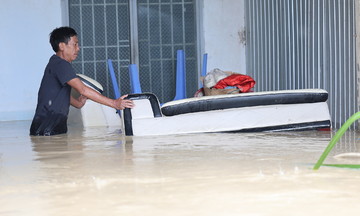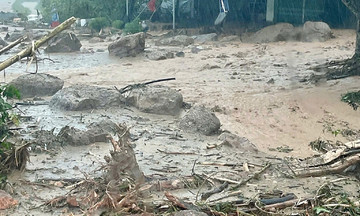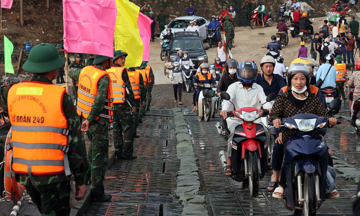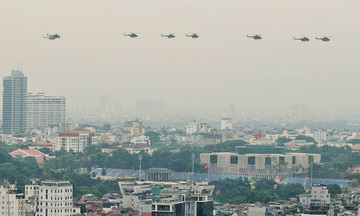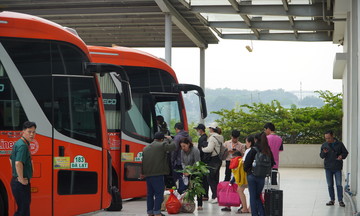Built in 2015, the Vinh Xanh 58 was 24 m long, 6 m wide, with a 12-ton capacity and a passenger limit of 48. The vessel held a VR-SI inland waterway safety and environmental protection certificate, permitting operation in SI zones, or waters with a maximum wave height of 2 m.
At a press conference on 20/7, Bui Hong Minh, Deputy Director of the Quang Ninh Department of Construction, stated that local regulations require Ha Long bay tourist vessels to exceed national safety standards, which 100% of vessels currently meet. The Vinh Xanh 58 had a stability safety factor of 2.3 (compared to the standard of 1) and was certified until the end of 2026.
Are current vessel standards appropriate?
Do Binh Duong, Director of a unit under SAMASER Holdings, a maritime safety service company, emphasized that passenger vessels demand the highest safety standards, especially in hull stability design, considering various weather conditions, safety equipment, and emergency procedures. All three are essential for safe operation.
Duong questioned the current standards, given that the Vinh Xanh 58, designed to exceed them, still capsized within seconds of encountering a squall. He argued that classifying the bay as an inland waterway and applying corresponding vessel standards is "unreasonable." He suggested Ha Long bay tourist vessels should adhere to SB (river-sea) vessel standards, designed for waters with a maximum wave height of 2.5 m.
"Even small yachts adhere to this standard for sea travel. Why are tourist vessels in the bay, which require the strictest safety standards, subject to the same regulations as river vessels?", Duong asked.
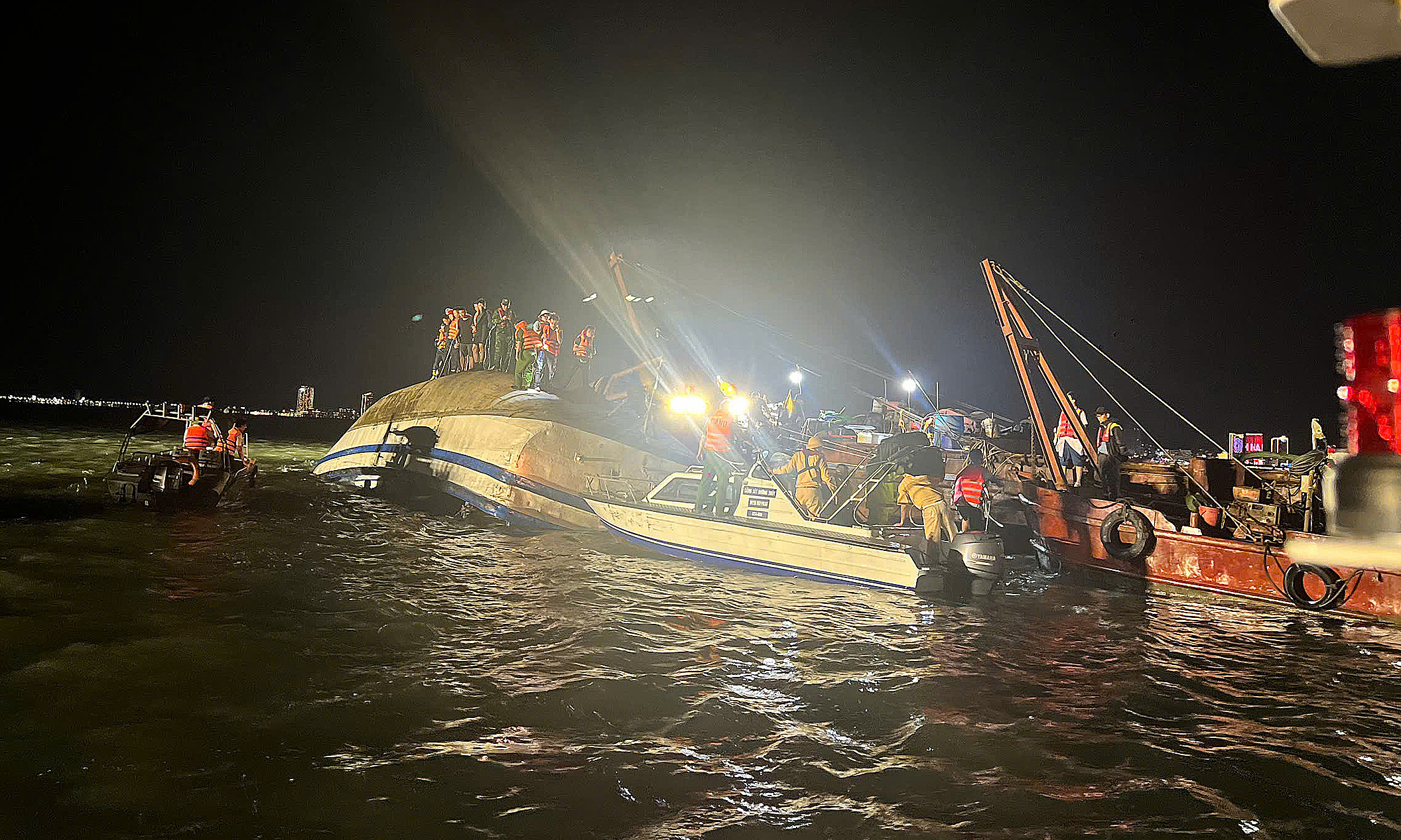 |
The Vinh Xanh 58 being turned upright late on 19/7 and early 20/7. Photo: Xuan Hoa |
The Vinh Xanh 58 being turned upright late on 19/7 and early 20/7. Photo: Xuan Hoa
Vu Anh, Head of the River Vessel Department at the Vietnam Register, clarified that inland waterways are defined by the 2014 Inland Waterway Traffic Law as navigable waters for inland vessels, including rivers, canals, streams, lagoons, bays, and coastal areas.
According to national technical standards, Ha Long and Bai Tu Long bays are classified as SII river zones (with wave heights up to 1.2 m). The Ha Long - Cat Ba island and Hai Phong - Cat Ba routes are classified as SI zones (wave heights up to 2 m). The Vinh Xanh 58, designed to VR-SI standards, exceeds the VR-SII level, allowing operation not only within Ha Long bay but also on routes to Cat Ba.
Addressing the call for revised standards, Vu Anh explained that Vietnam's national technical standards for watercraft are based on input from universities and research institutes, incorporating standards from countries like Russia, China, and Japan. The latest standards, revised three times and issued by the Ministry of Construction in 2025, are comparable to international standards. For Ha Long bay, the standards consider wave height and wind speed.
Safe vessel operation requires a rigorous process from design and construction to operational oversight. Vu Anh outlined the procedure: before operation, businesses must submit vessel designs for approval by the registration agency based on established standards. Upon completion, vessels meeting the standards receive a safety and environmental protection certificate from the registration agency.
"During operation, vessels undergo annual inspections. Operational vessels also require permits for both the vessel and operator, along with daily port entry and exit permits," he said.
Was the vessel design safe?
Hoang Giang, former Head of Maritime Safety at Hai Phong Port Authority, considered the rapid capsizing of the Vinh Xanh 58 in mere seconds "unusual." He stressed the need to investigate factors like design, load, weather conditions, and operational procedures. VR-SI vessels, typically small, are designed for near-shore operation, on rivers or calm waters.
Such vessels are vulnerable to instability in exceeding wave heights. A high center of gravity or a lack of a robust stabilizing system increases the risk of capsizing in rough seas. Authorities need to inspect the vessel's height and any design modifications or conversions.
According to a maritime expert, VR-SI vessels are restricted to waters with a maximum wave height of 2 m and within 12 nautical miles of shore. Safe yacht operation in Ha Long bay is paramount. Vessels should aim for the highest inland waterway standard, VR-SB.
VR-SB hulls are designed to withstand waves up to 2.5 m, requiring high-strength materials and construction for stability in adverse weather. Factors like freeboard, wind pressure, wind speed, and ballast tank arrangement are rigorously tested to minimize capsizing risk.
VR-SB vessels are equipped with advanced navigation and communication systems, including radar, AIS, NAVTEX, and handheld radios. Crucially, they have EPIRBs, which automatically activate upon submersion, transmitting distress signals via satellite to rescue units. Sufficient life rafts, lifeboats, and life jackets for all passengers and crew are mandatory.
Responding to these points, Vu Anh acknowledged that no design can withstand extreme weather events like squalls. Therefore, authorities must manage safety and risks, using weather forecasts to restrict vessel departures and issue emergency alerts to vessels at sea during severe weather. Passengers need thorough safety briefings, and captains must promptly navigate to sheltered areas near islands in bad weather.
Some maritime experts recommend a dedicated 24/7 coastal rescue force for Ha Long bay, constantly monitoring vessel signals for rapid response in emergencies.
Carrying 46 passengers and three crew members, the Vinh Xanh 58 departed Bai Chay port, Quang Ninh province, at 12:55 on 19/7. At 13:30, near Dau Go cave, the vessel capsized due to strong winds, throwing everyone overboard. By 14:05, the vessel lost its GPS signal.
The capsizing occurred over one km from Tuan Chau pier and three km from the shore. However, the provincial Border Guard didn't receive the accident report until 15:30. The tragedy resulted in 37 fatalities, two missing persons, and 10 survivors. Search efforts for the remaining two missing individuals are ongoing.
Le Tan - Doan Loan



